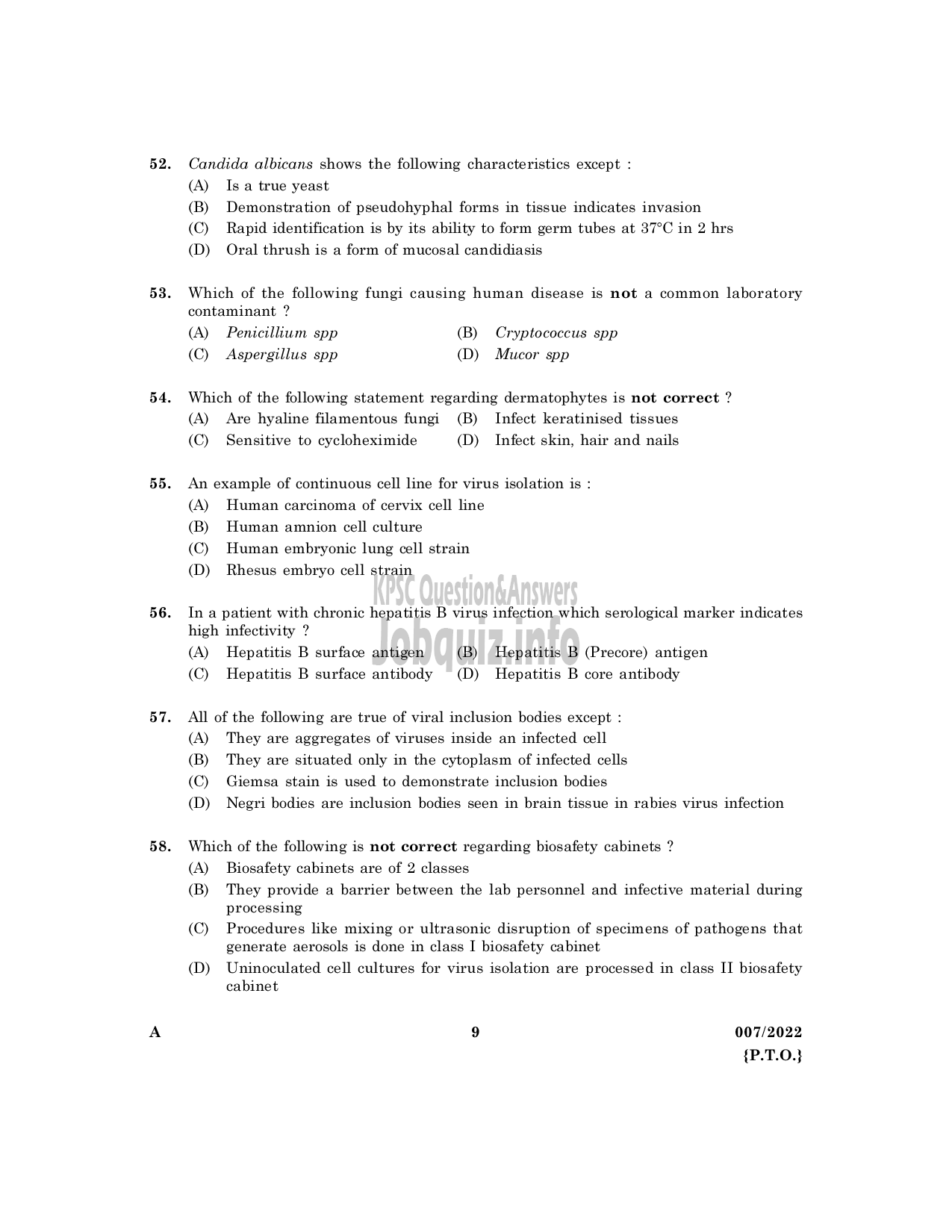Kerala PSC Previous Years Question Paper & Answer
Page:9
Below are the scanned copy of Kerala Public Service Commission (KPSC) Question Paper with answer keys of Exam Name 'Laboratory Technician Gr II- IMS/ Health etc ' And exam conducted in the year 22. And Question paper code was '007/22'. Medium of question paper was in Malayalam or English . Booklet Alphacode was 'A'. Answer keys are given at the bottom, but we suggest you to try answering the questions yourself and compare the key along wih to check your performance. Because we would like you to do and practice by yourself.
52.
53.
54.
55.
56.
57.
58.
Candida albicans shows the following characteristics except :
(A) 18 8 true yeast
(B) Demonstration of pseudohyphal forms in tissue indicates invasion
(C) Rapid identification is by its ability to form germ tubes at 37°C in 2 hrs
(D) Oral thrush is a form of mucosal candidiasis
Which of the following fungi causing human disease is not a common laboratory
contaminant ?
(A) Penicillium spp (B) Cryptococcus spp
(C) Aspergillus spp (D) Mucor spp
Which of the following statement regarding dermatophytes is not correct ?
(A) Are hyaline filamentous fungi (1) Infect keratinised tissues
(C) Sensitive to cycloheximide (D) Infect skin, hair and nails
An example of continuous cell line for virus isolation is :
(A) Human carcinoma of cervix cell line
(B) Human amnion cell culture
(C) Human embryonic lung cell strain
(D) Rhesus embryo cell strain
In a patient with chronic hepatitis B virus infection which serological marker indicates
high infectivity ?
(A) Hepatitis B surface antigen (B) Hepatitis B (Precore) antigen
(C) Hepatitis B surface antibody (D) Hepatitis B core antibody
All of the following are true of viral inclusion bodies except :
(A) They are aggregates of viruses inside an infected cell
(B) They are situated only in the cytoplasm of infected cells
(C) Giemsa stain is used to demonstrate inclusion bodies
(D) Negri bodies are inclusion bodies seen in brain tissue in rabies virus infection
Which of the following is not correct regarding biosafety cabinets ?
(A) Biosafety cabinets are of 2 classes
(B) They provide a barrier between the lab personnel and infective material during
processing
(C) Procedures like mixing or ultrasonic disruption of specimens of pathogens that
generate aerosols is done in class I biosafety cabinet
(D) Uninoculated cell cultures for virus isolation are processed in class 11 biosafety
cabinet
9 007/2022
{P.T.0.}
